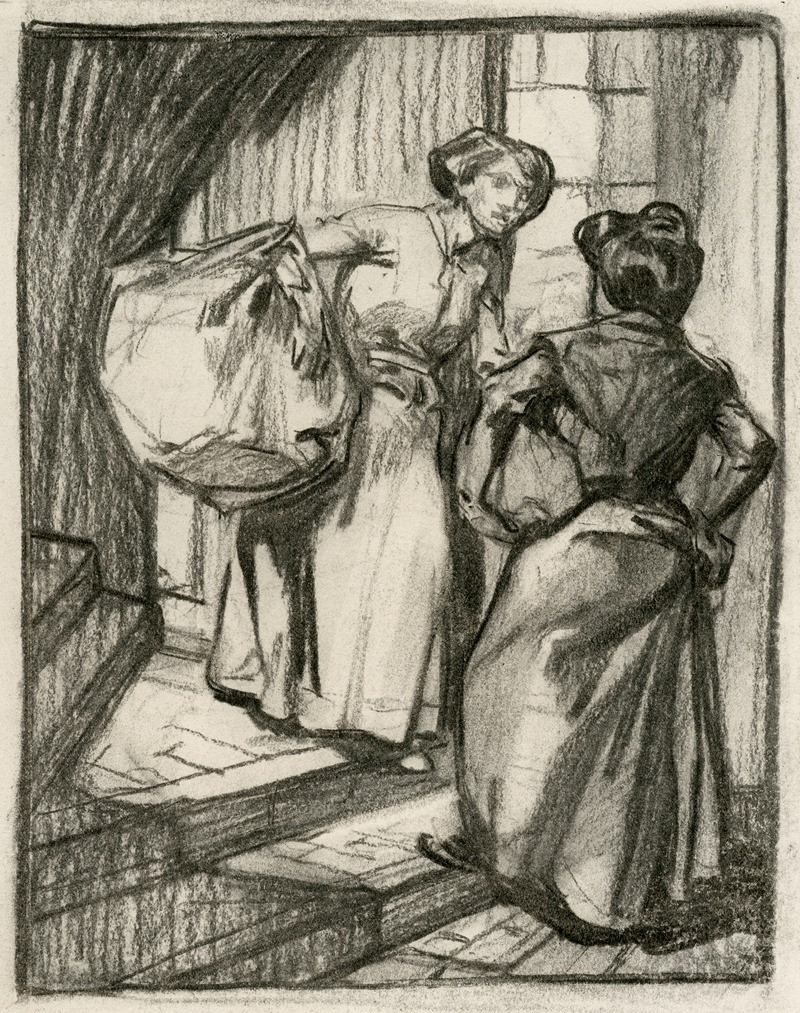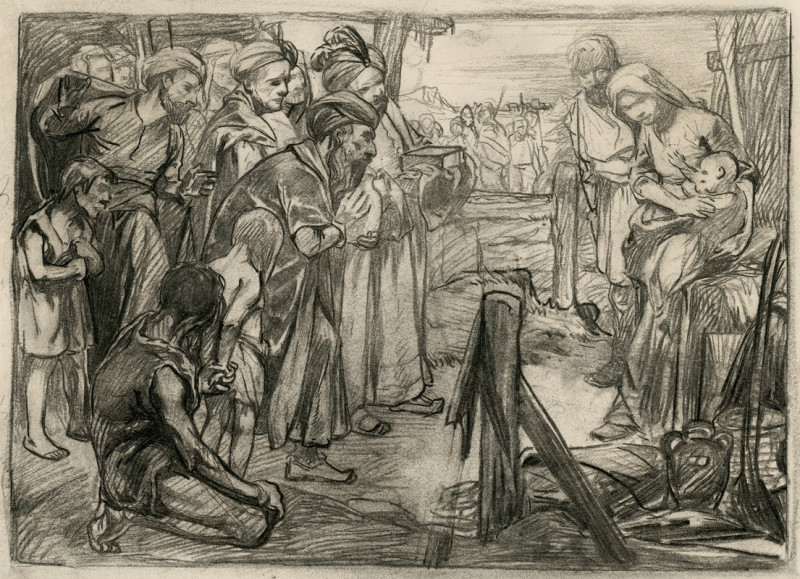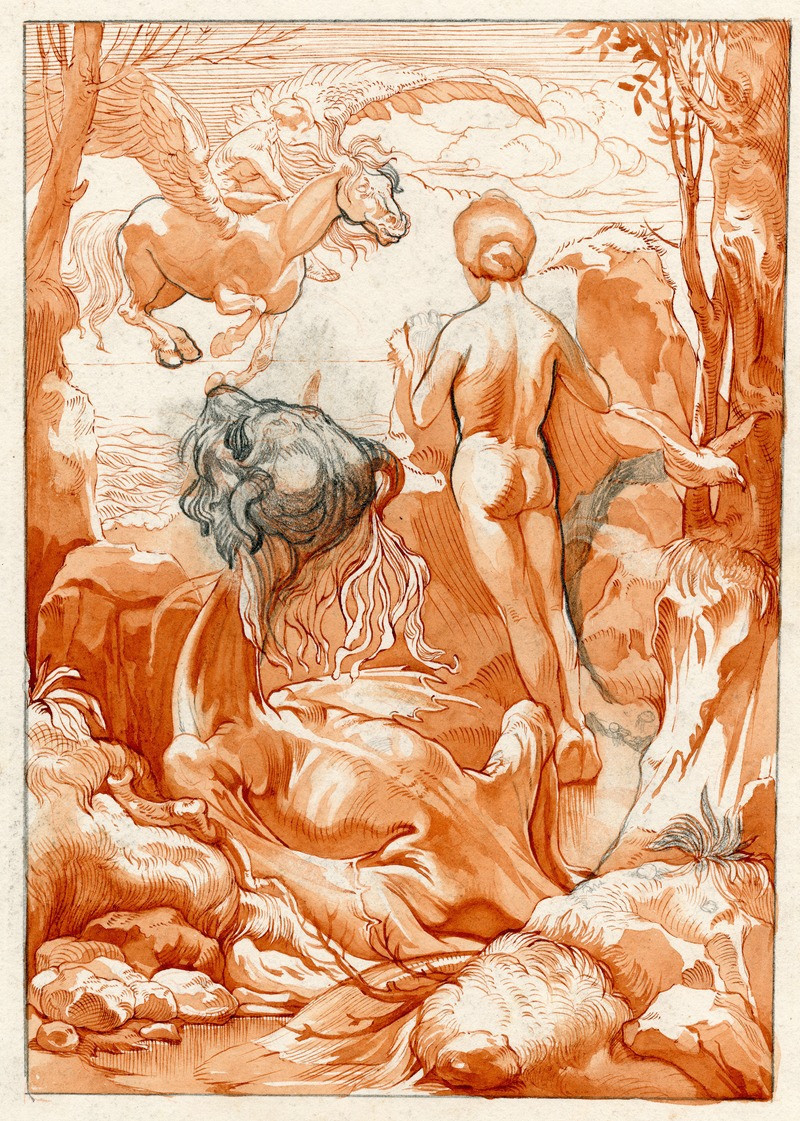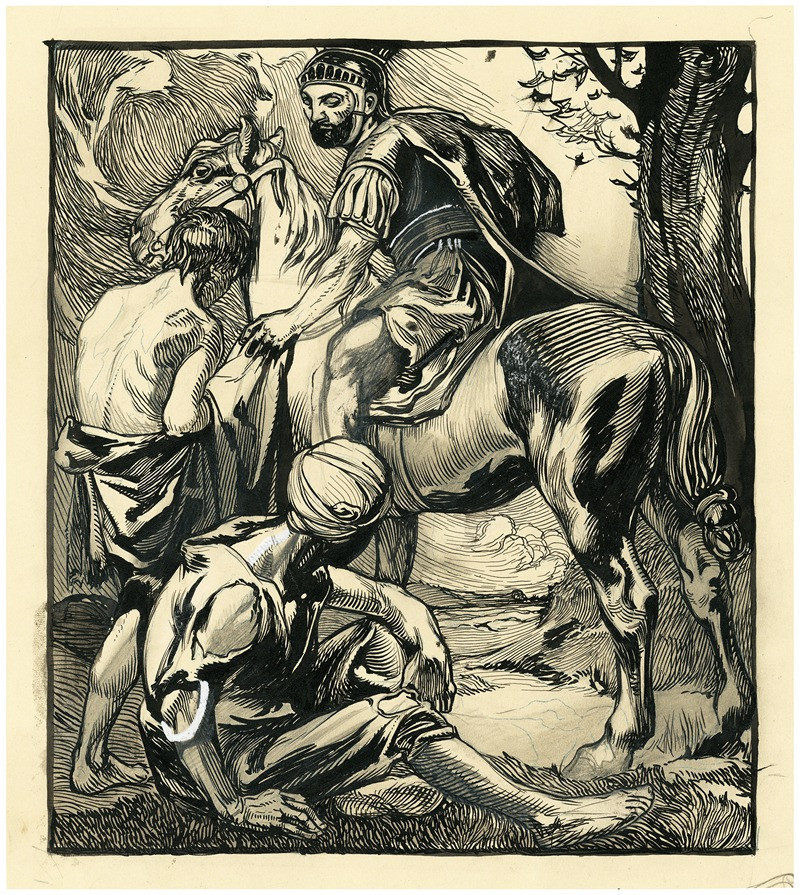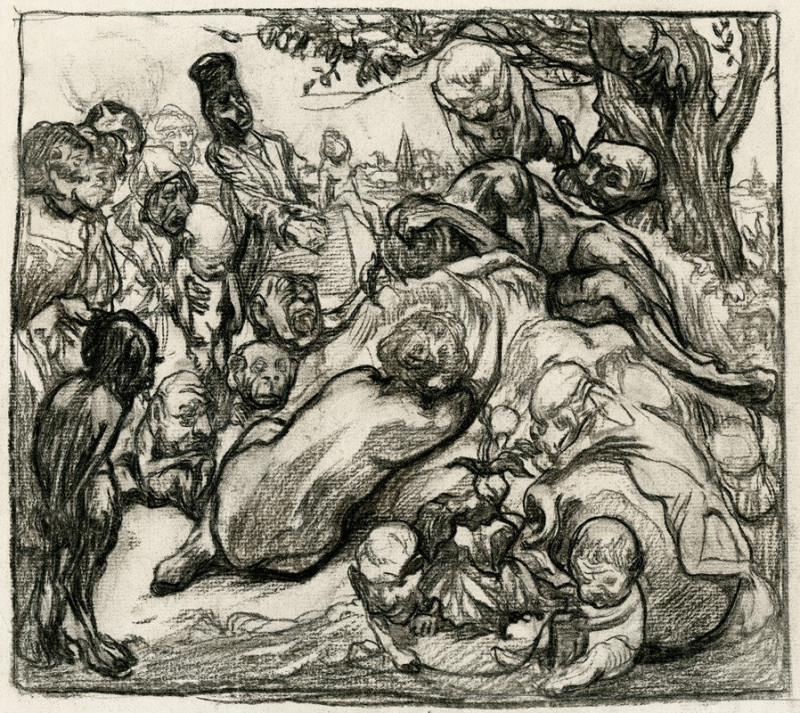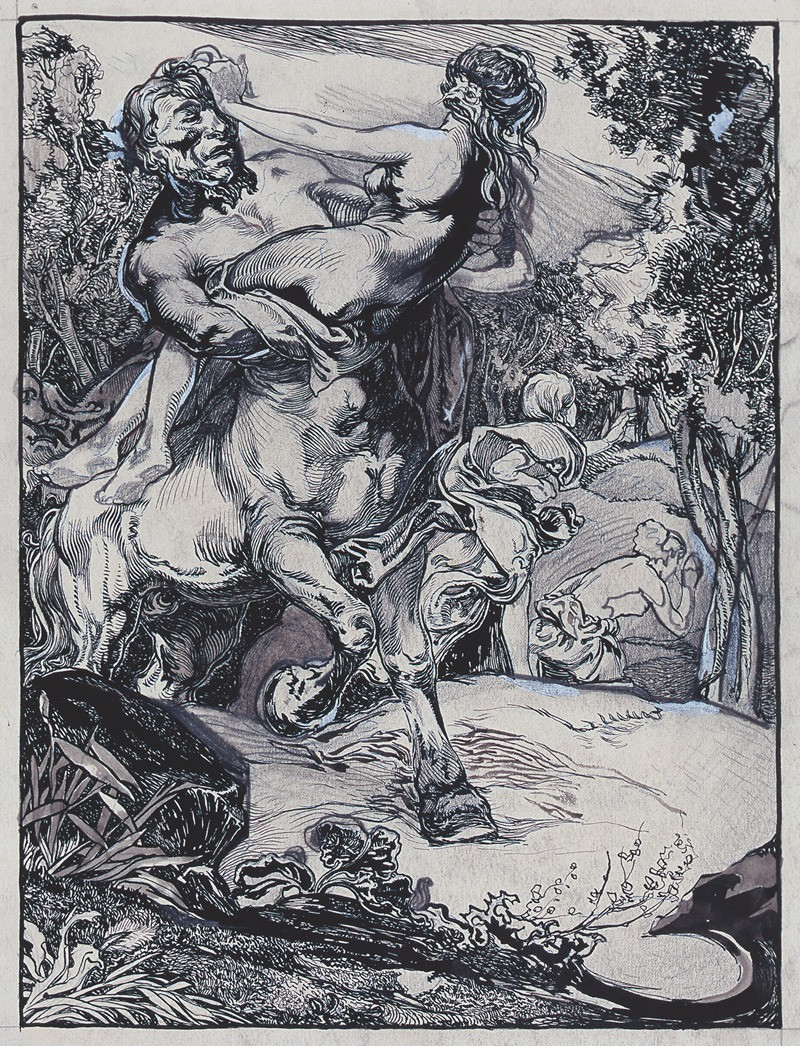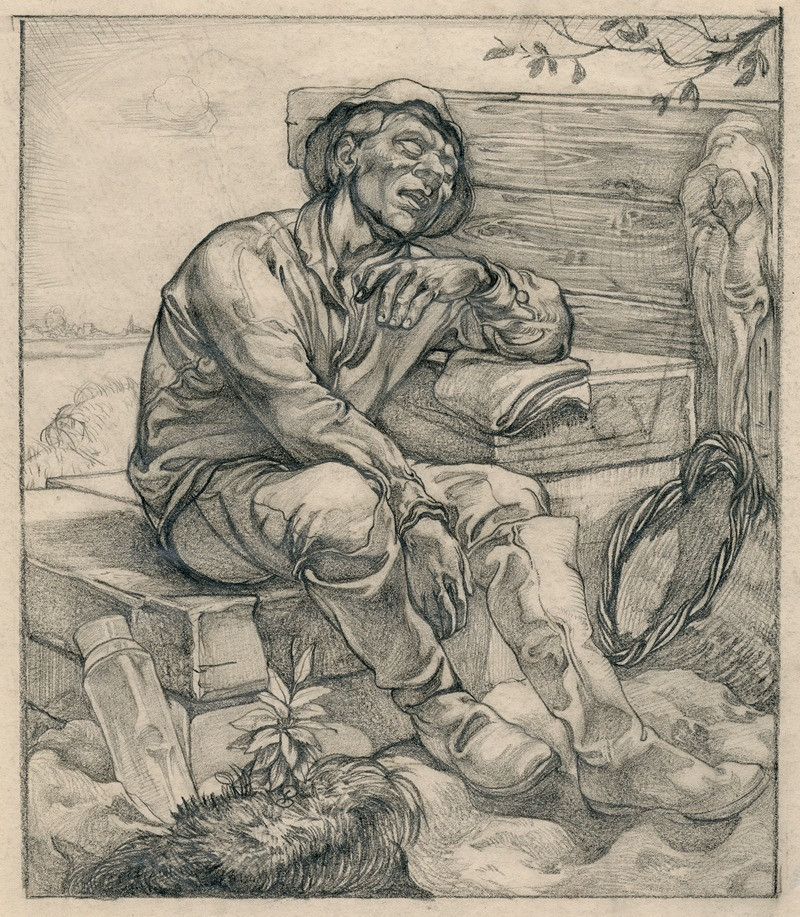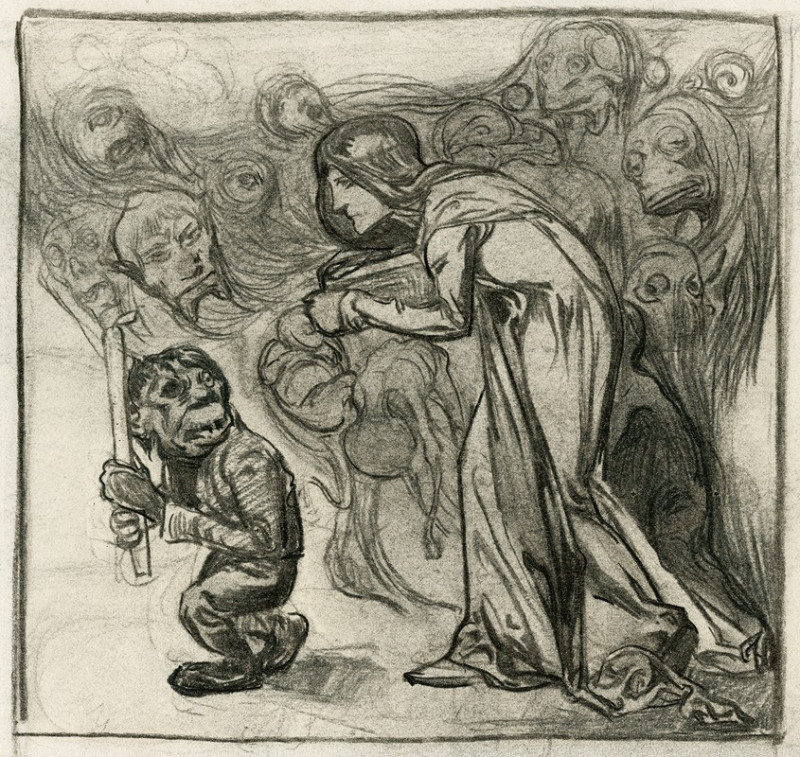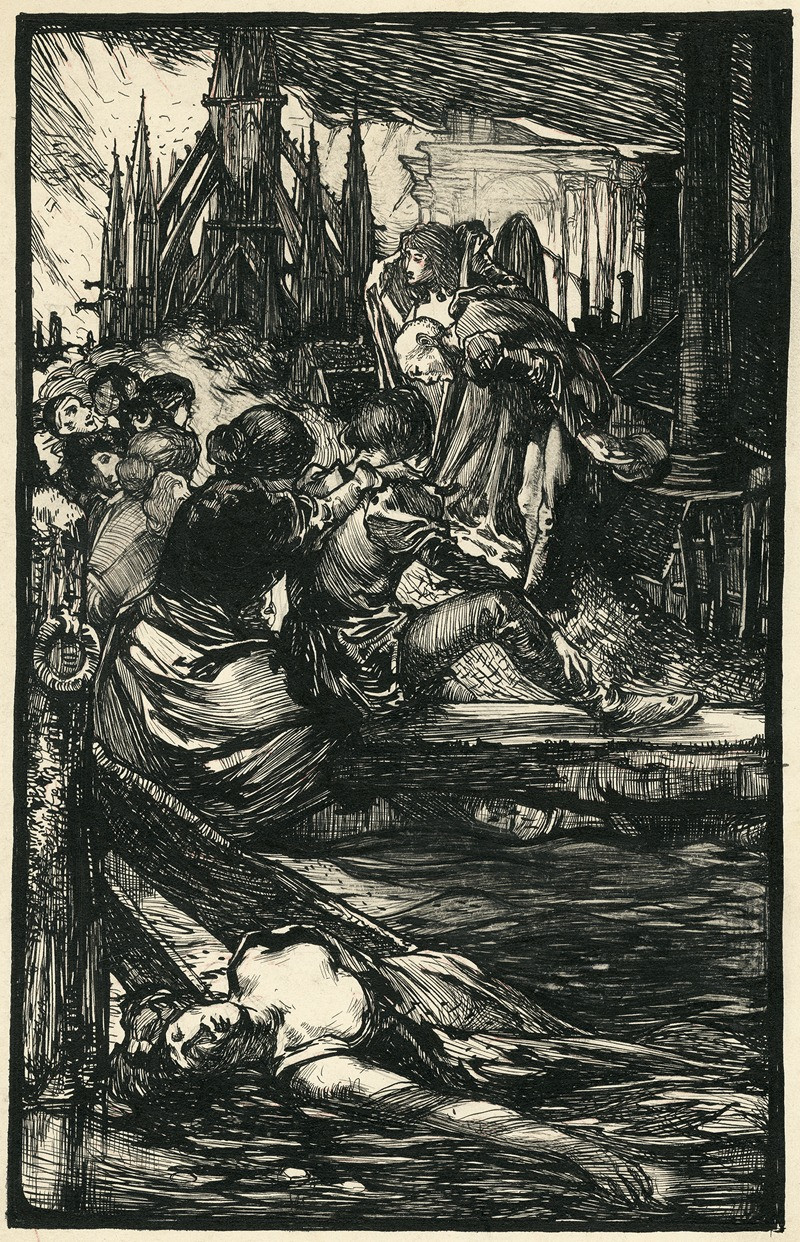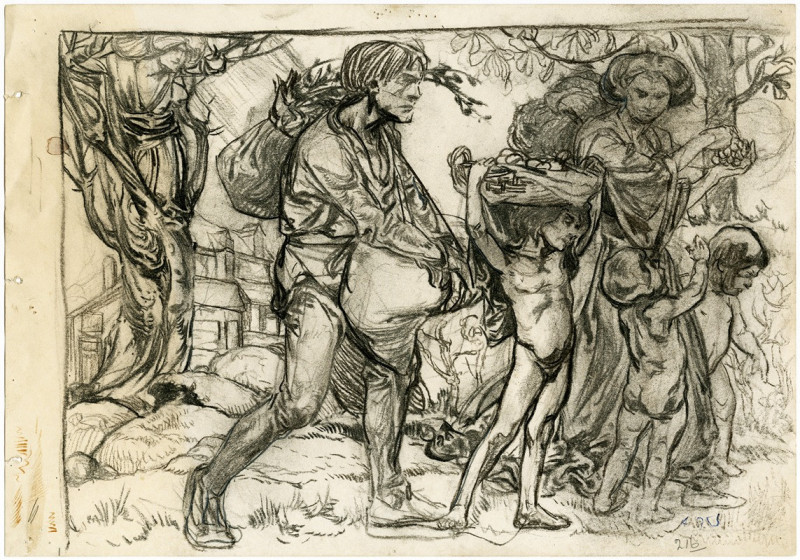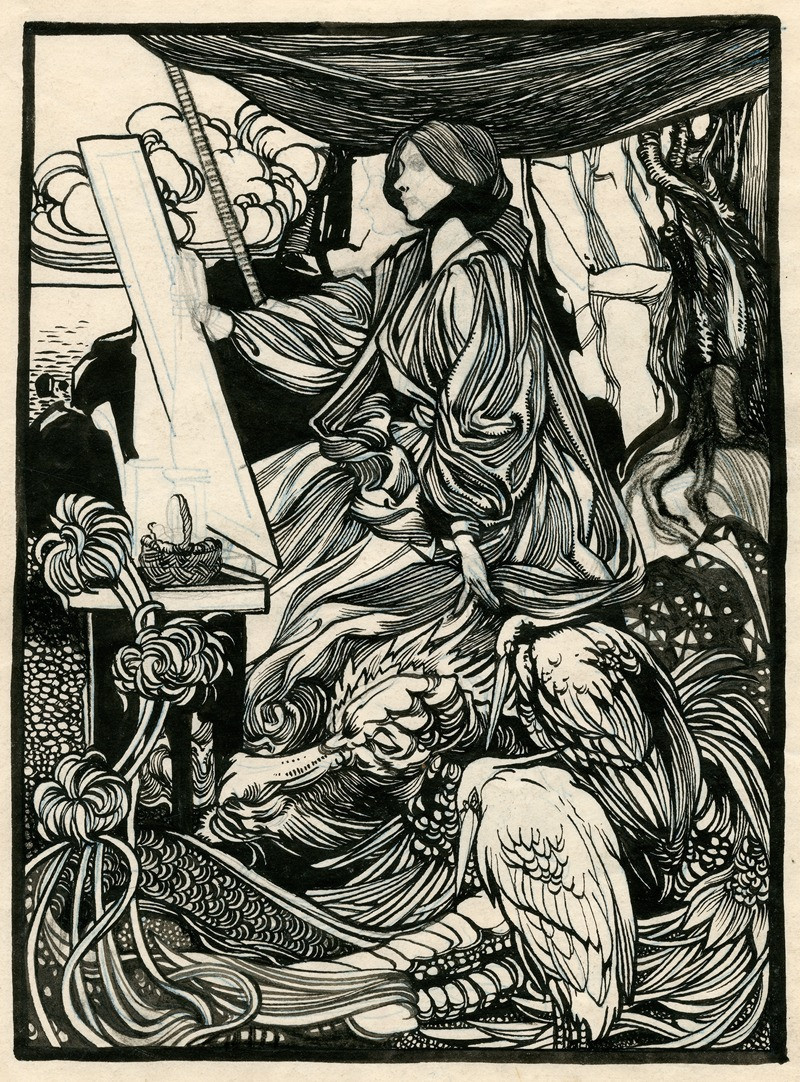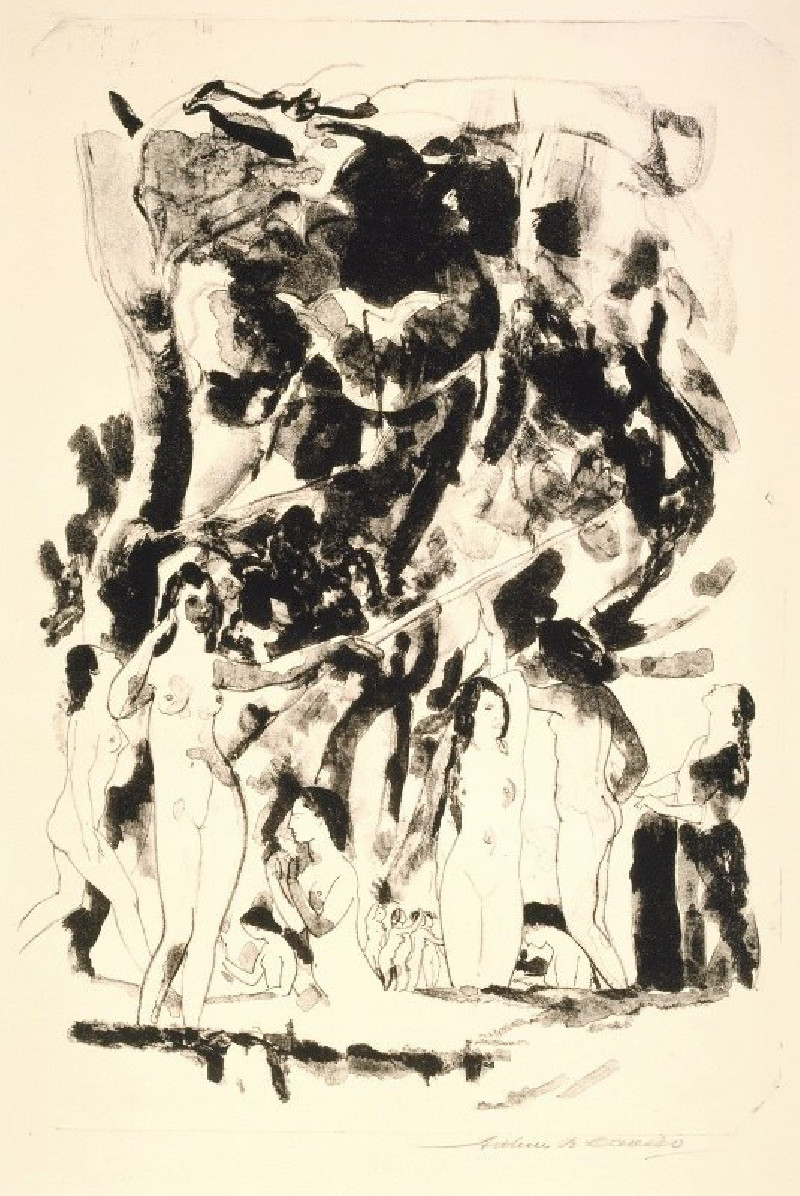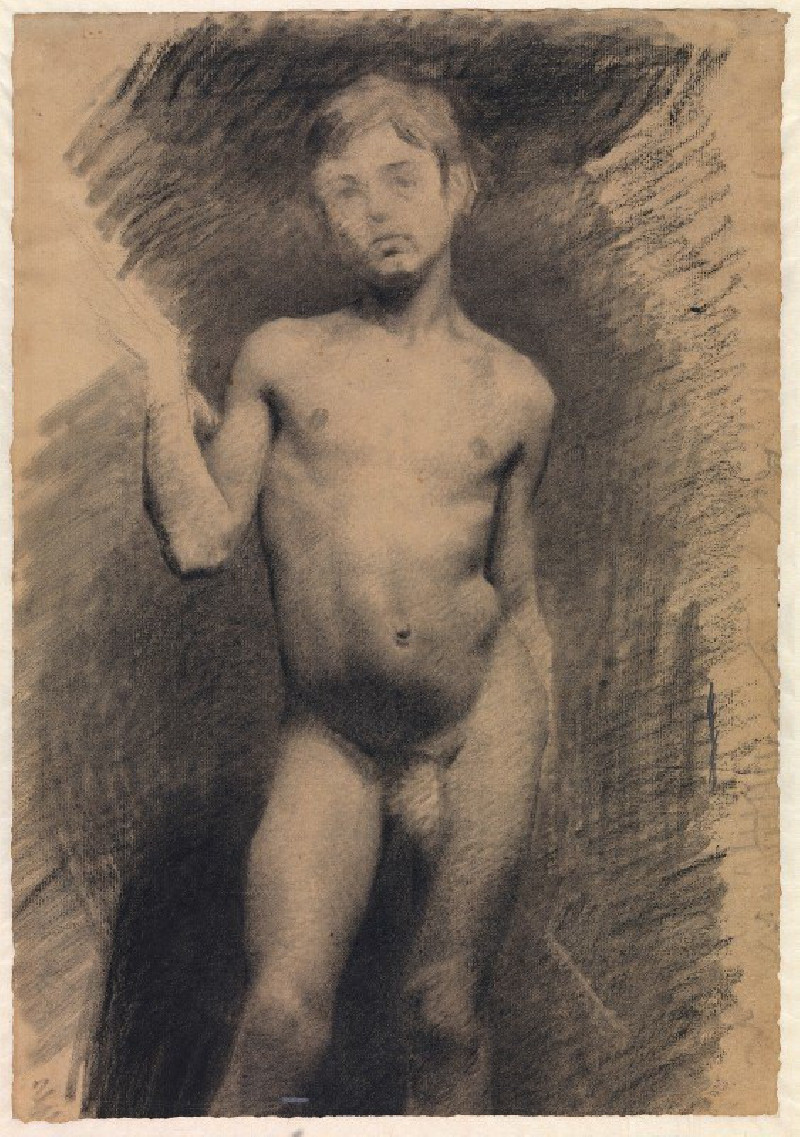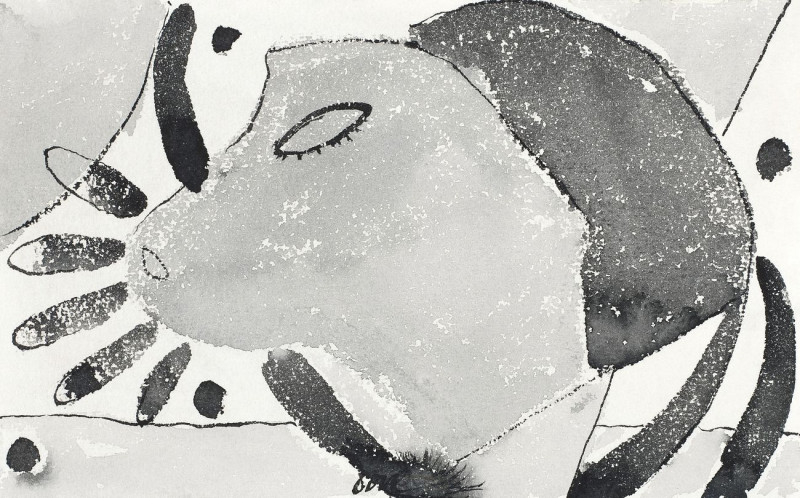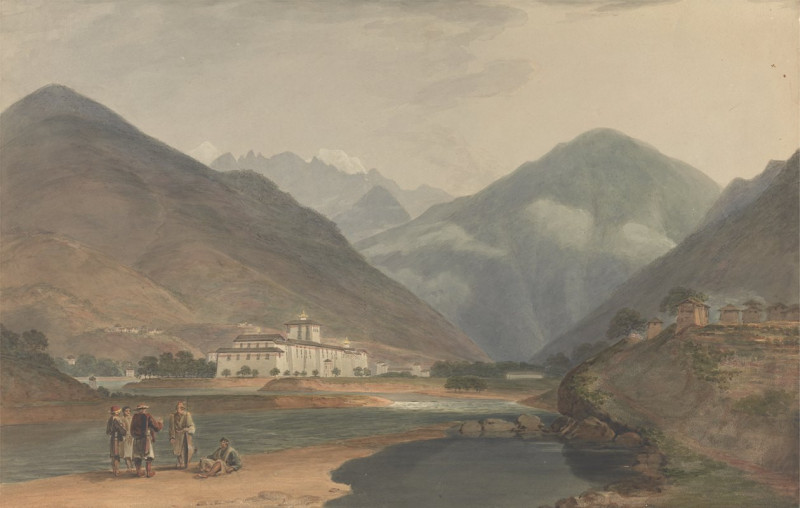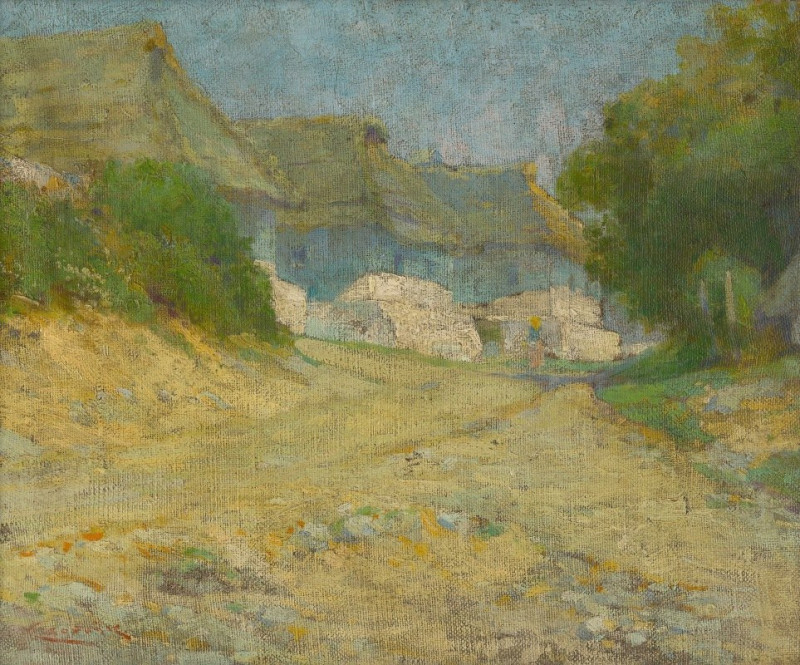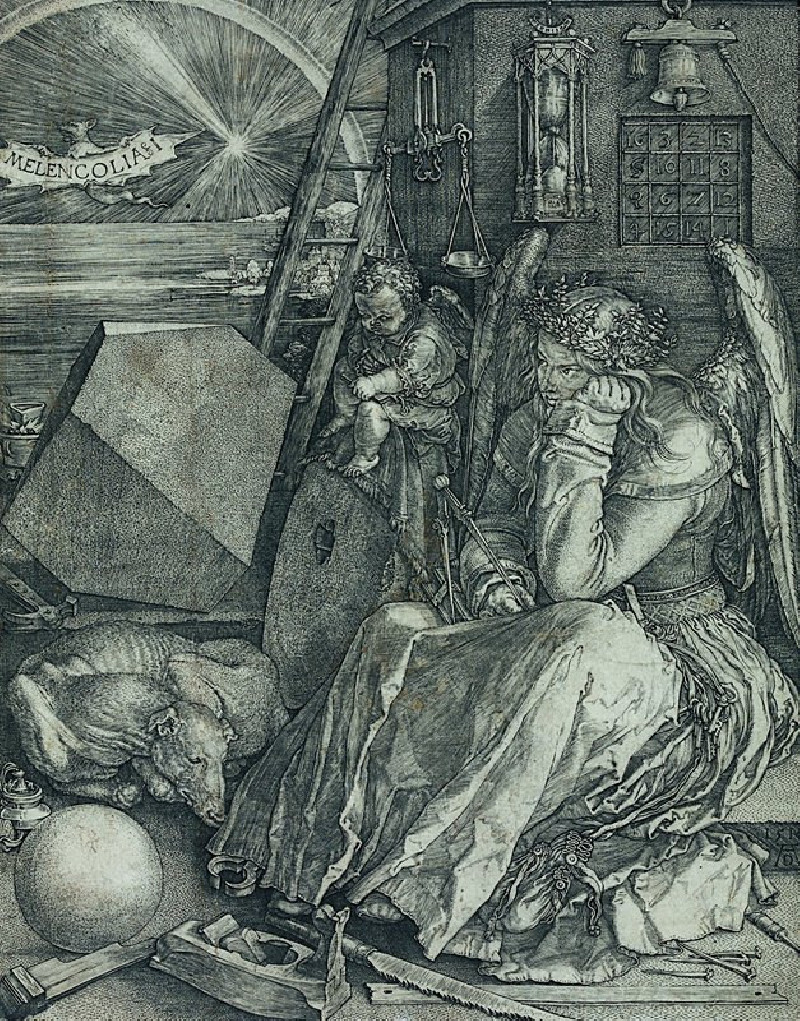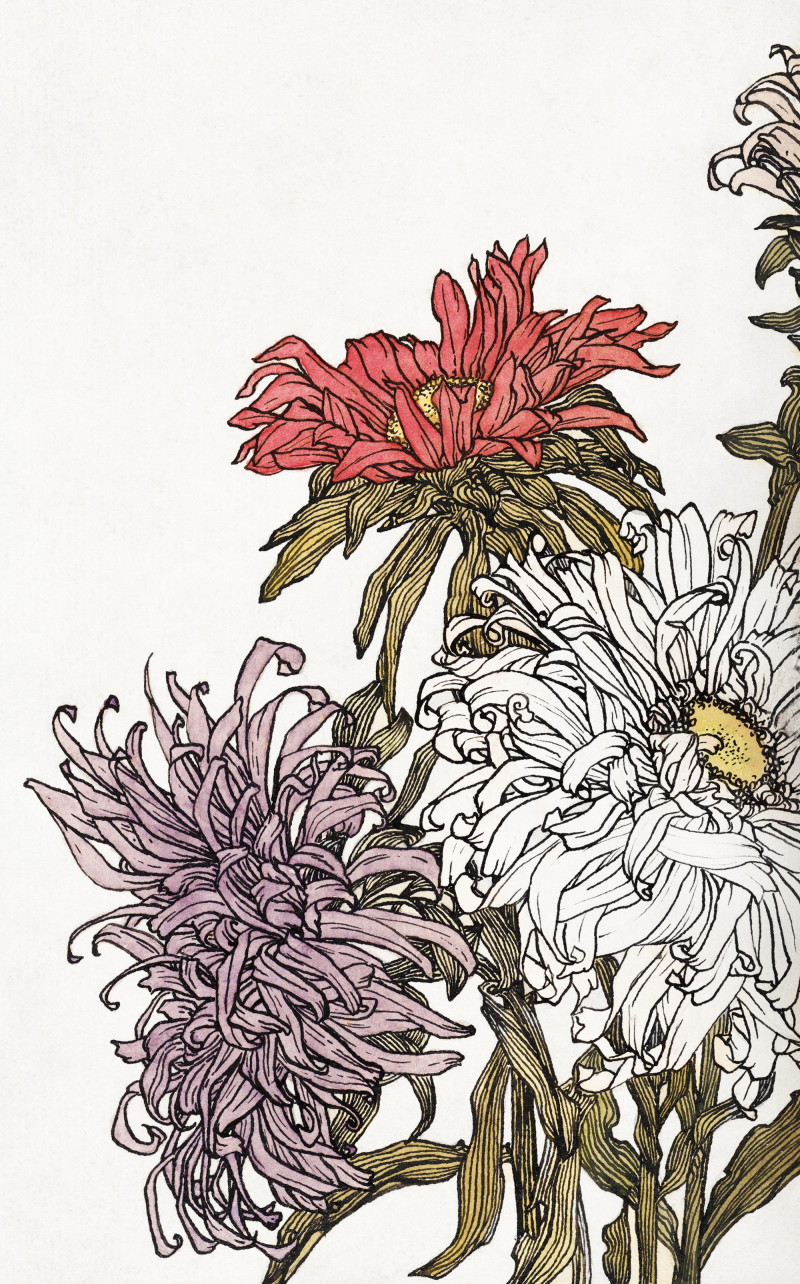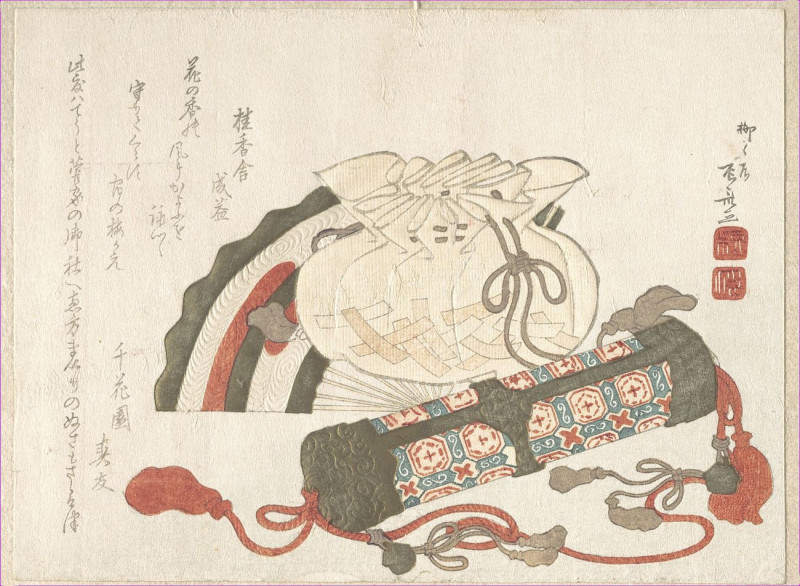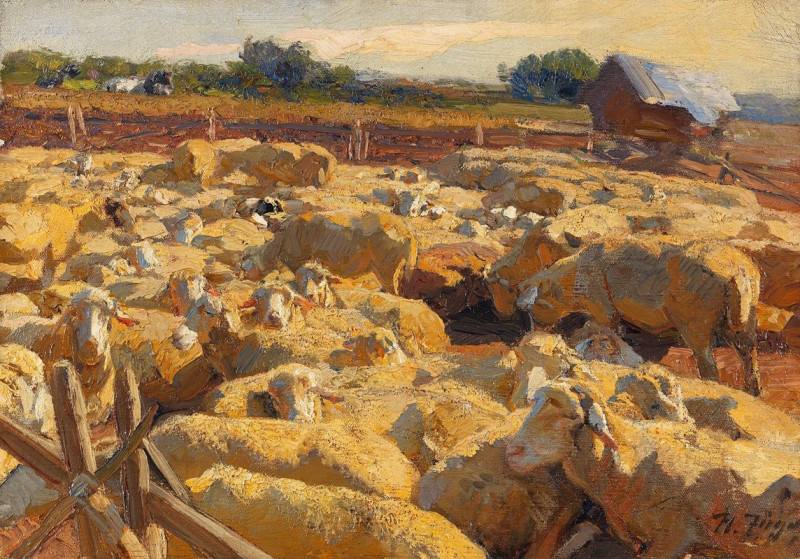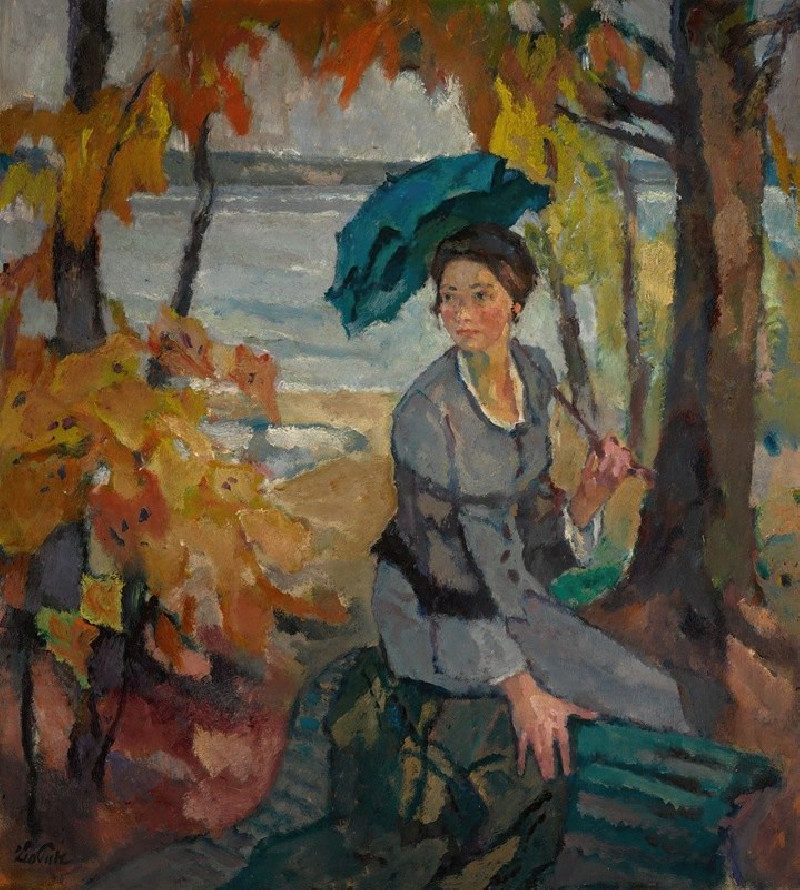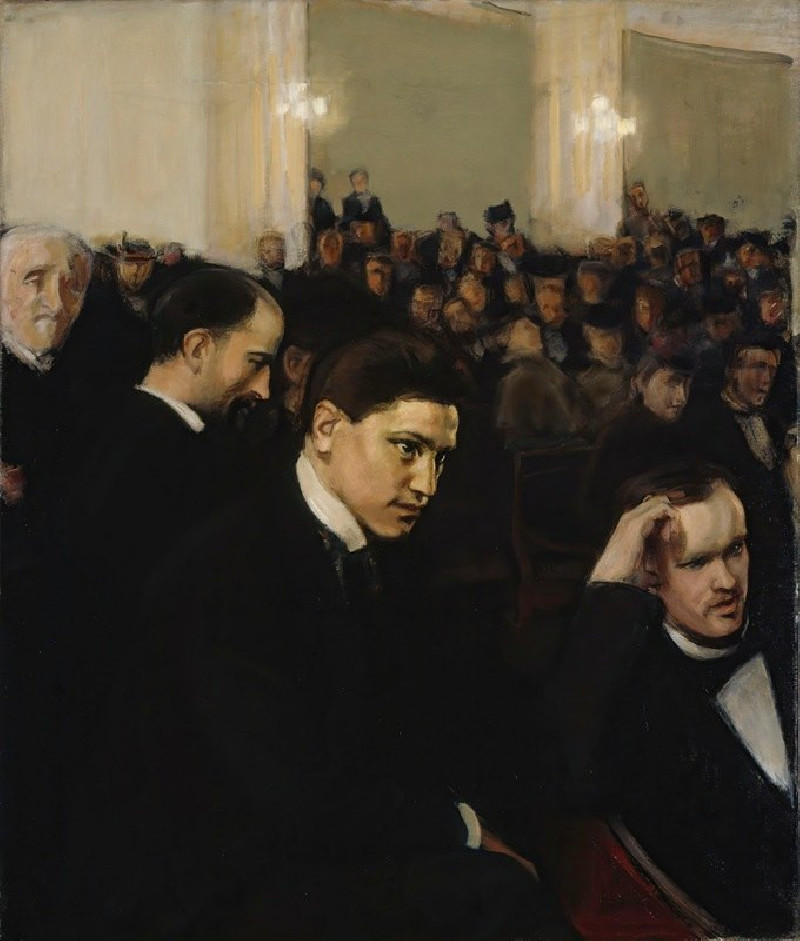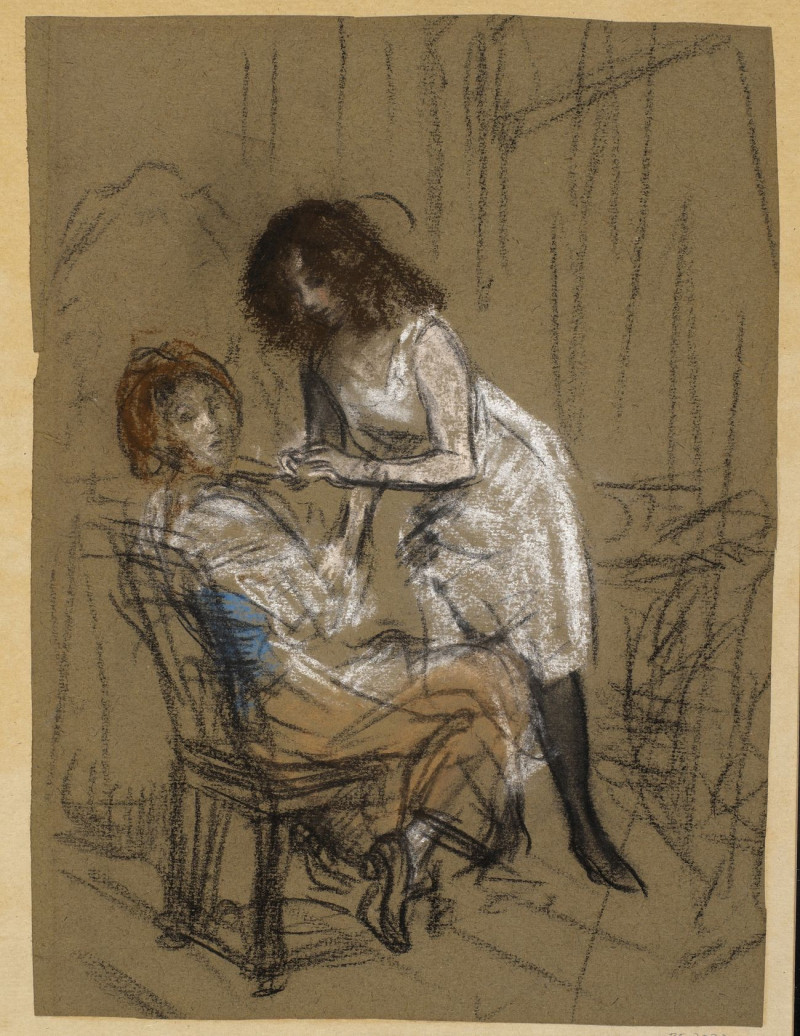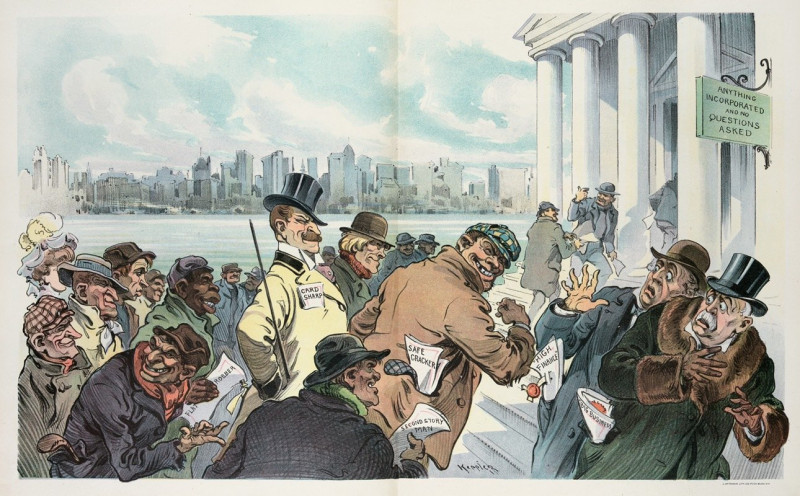Two women having a conversation
Technique: Giclée quality print
Recommended by our customers
More about this artwork
Johannes Josephus Aarts' artwork titled "Two Women Having a Conversation" is a captivating charcoal sketch that beautifully captures a slice of everyday life from a bygone era. The scene is set in a rustic, perhaps European, street environment, marked by cobblestones and the corner of a traditional building that frames the conversation between the two women.The artist has skillfully used charcoal to detail the figures and their surroundings, utilizing a range of tones to bring texture and depth to the image. The woman on the left is depicted partially in shadow, enhancing the three-dimensionality of the scene. She is shown holding a large, bulky sack over one shoulder, suggesting she might be in the midst of chores or returning from the market. Her attire, consisting of a long dress and a capped head, hints at the modest fashions of working-class women of the earlier 20th century.The second woman, engaged in conversation, turns towards her companion, her face partly visible as she speaks. Her dress is also typical of the period, complete with a formal, high-collared blouse and a swept-back hairstyle, indicating a moment taken from her day to engage in this interaction.This piece reflects Aarts' keen observation of human interactions and his ability to express subtle complexities of social exchange and personal stories through art. The use of shadow and light not only highlights the architectural and human forms but also seems to mirror the tone of the conversation—intimate, everyday, yet full of the depth and texture of life itself.
Delivery
Returns
Johannes Josephus Aarts was a Dutch painter, illustrator, lithographer, engraver, etcher, writer, academic teacher and director, lecturer, sculptor and book-cover designer.
Jan Aarts received training in the Royal Academy of Art, The Hague. He was active there until 1911, and in Amsterdam from 1911 to 1934. Initially, until around 1900, Aarts worked above all on engravings. Thereafter he began to also use other graphic methods. In his work, one found depictions of farmworkers, dyke workers and later also tramps, beggars and invalids. Between 1920 and 1930 he produced mostly visionary work with apocalyptic scenes.

